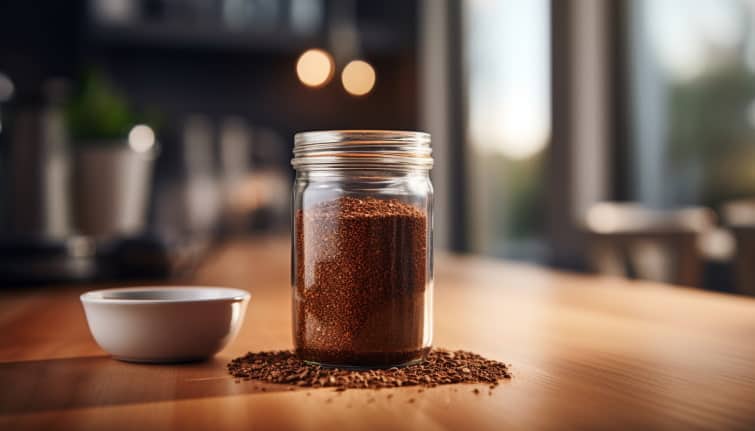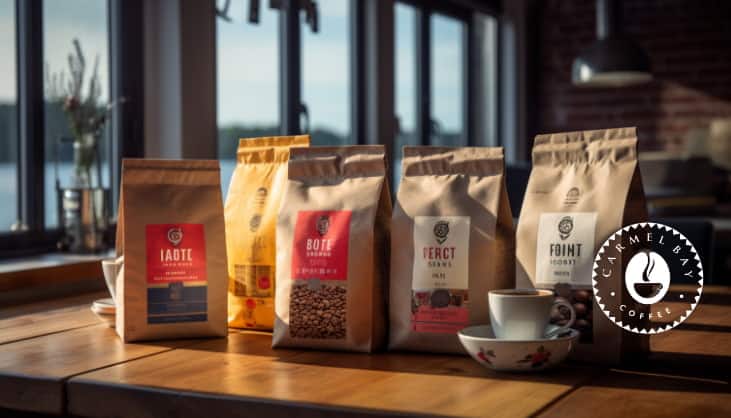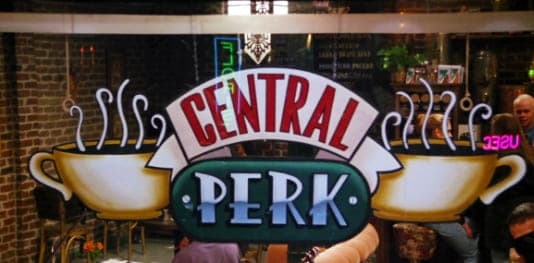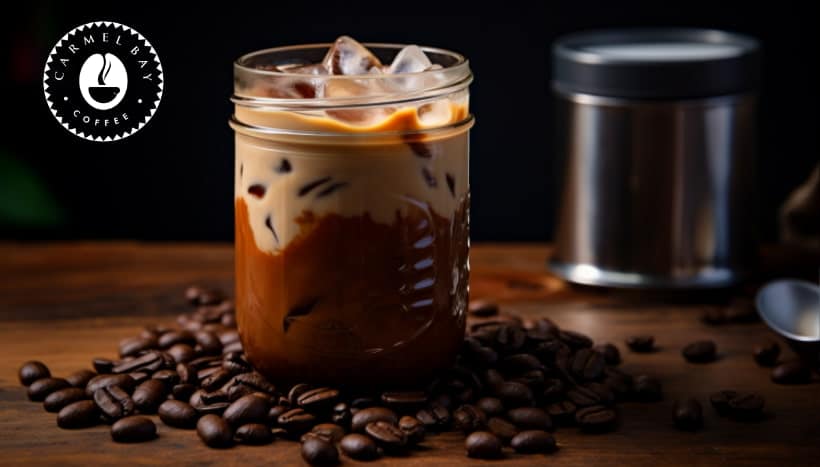Coffee, from its ancient Ethiopian roots to its modern urban significance, is more than a beverage—it’s a cultural phenomenon. This exploration dives into coffee’s impact on pop culture, its central role in social interactions, and the promising future trends shaping its journey. We’ll cover all of the Historical coffee trends throughout history.

The Ancient Beginnings
Getting into historical coffee data, we find coffee’s origins steeped in mystery and lore, with tales that whisk us away to the ancient Ethiopian plateaus. The legend of Kaldi, the young goatherd, is one that has been passed down through generations.
As the story goes, Kaldi was puzzled when he observed his goats frolicking with unusual zest after consuming berries from a particular bush. Intrigued, he decided to sample these berries himself. The burst of energy he experienced was nothing short of revelatory.
Kaldi’s discovery didn’t remain a secret for long. He shared it with a local monastery, where monks used the berries to concoct a drink that helped them stay awake during extended hours of prayer. Word spread quickly, and these magical beans were soon being traded and used across regions. This was the humble beginning of what would become the world’s most beloved beverage.
The Coffeehouse Era

An article about historical coffee data wouldn’t be complete without talking about The Coffeehouse Era.
The 15th century heralded a new chapter in the story of coffee. As the beans made their way from Ethiopia to the Arabian Peninsula, they birthed a new cultural institution: the coffeehouse, or “qahveh khaneh.” These establishments began to sprout in cities across the Middle East, from Mecca to Istanbul.
But the qahveh khaneh was more than just a place to enjoy a cup of coffee. It was a melting pot of ideas and cultures. Intellectuals, artists, and even common folk would gather to engage in spirited debates, listen to enchanting music, or immerse themselves in a game of chess.
These coffeehouses became the nerve centers of social and intellectual life, earning them the moniker “Schools of the Wise.” The influence of the coffeehouse was so profound that it began to shape the era’s political discussions, art, and literature.
Diving deeper into Historical Coffee Trends, Coffee in the 20th Century
The 20th century, a significant period in historical coffee trends, marked unprecedented changes and innovations in the coffee world. As societies underwent rapid urbanization and industrialization, the demand for coffee surged.
This was a century that would see the rise of global coffee brands, the invention of new brewing methods, and a shift in coffee consumption patterns.
The early part of the century witnessed the advent of instant coffee, a product that promised convenience in an increasingly fast-paced world. This innovation was particularly significant during World War II, as soldiers relied on instant coffee to keep them alert in the trenches.
As the century progressed, there was a growing emphasis on the quality and origin of coffee beans. This was the beginning of the specialty coffee movement, which sought to highlight the unique flavors and profiles of beans from different regions.
Coffee was no longer just a commodity; it was an experience, a journey that transported the drinker to far-off lands with every sip.
The Rise of Instant Coffee

A significant mention in our exploration of Historical Coffee Trends is the advent and popularity of instant coffee.
The early 20th century was a time of rapid innovation and change. As the world became busier, there was a growing demand for convenience in all aspects of life, including how we consumed our favorite beverages. Enter instant coffee.
This revolutionary product was created by freeze-drying or spray-drying brewed coffee, resulting in a powder or granulated form that could be quickly rehydrated with hot water.
Instant coffee’s appeal was undeniable.
It was quick and easy to prepare and had a long shelf life, making it perfect for travelers and those on the go. Its popularity soared during World War II, when it became a staple for soldiers on the front lines. The military saw the benefits of providing troops with a quick caffeine boost to keep them alert during long and grueling operations.
The convenience and portability of instant coffee made it an ideal choice for rations.
Specialty Coffee Movement

As the 20th century progressed, there was a growing desire among coffee enthusiasts for a richer, more nuanced coffee experience. The latter part of the century, particularly the 1980s and 1990s, saw the rise of the specialty coffee movement.
This movement was characterized by a focus on high-quality beans, artisanal roasting techniques, and an emphasis on the unique flavors and profiles of beans sourced from specific regions.
Brands like Starbucks played a pivotal role in popularizing this trend. They introduced consumers to a wide variety of coffee types, from single-origin brews to elaborate espresso-based concoctions. Coffee shops became cultural hubs, places where people could not only enjoy a cup of coffee but also socialize, work, or simply relax.
The ambiance, music, and even the decor of these establishments were all designed to enhance the coffee-drinking experience. Coffee was no longer just a beverage; it was a lifestyle.
While we’re on the topic of contemporary trends, it’s impossible to ignore the booming popularity of subscription-based models. Let’s get into this phenomenon as it intersects with the world of caffeine in my article on ‘The Rise of Specialty Coffee in Subscription Boxes.’
Coffee in the 21st Century
The 21st century has been a testament to coffee’s enduring appeal and its ability to adapt and evolve. This historical coffee trend era has seen a plethora of innovations, from new brewing methods to technological advancements that have transformed how we consume and enjoy coffee.
The rise of third-wave coffee shops has put a spotlight on the artisanal aspects of coffee production.
These establishments emphasize transparency, sustainability, and a direct connection with coffee farmers. They celebrate the unique characteristics of beans from different regions, often providing detailed information about the origin, altitude, and processing methods of the beans they serve.
Technology, too, has left its mark on the coffee industry. Smart coffee machines can now be controlled via smartphones, and subscription services deliver freshly roasted beans right to your doorstep.
Additionally, apps allow you to order and customize your drink with just a few taps, showcasing how technology has profoundly reshaped our coffee experience.
The 21st century has been a golden era for coffee lovers, offering a blend of tradition and innovation that promises an exciting future for this beloved beverage.
Third Wave Coffee
As we trace historical coffee data, the Third Wave Coffee Movement emerges as a significant shift in the early 2000s, reshaping our relationship with coffee. Rather than seeing coffee as a mere commodity, this movement elevates it to an art form.
Every cup tells a story, from the soil where the coffee plant grew to the barista’s meticulous brewing technique.
This artisanal perspective is akin to how wine enthusiasts savor the nuances of different vintages and terroirs. Beyond the cup, the Third Wave emphasizes transparency in the coffee supply chain. Many roasters now engage directly with coffee growers, ensuring the beans’ quality and fairer prices for the farmers.
This direct trade approach is intertwined with a commitment to sustainability. As environmental concerns come to the fore, the Third Wave champions organic farming, shade-grown coffee, and eco-friendly practices that respect our planet.
Cold Brew and Nitro Coffee
As we navigate through historical coffee trends, we find that coffee enthusiasts, always seeking new ways to savor their favorite beverage, have made cold brew a popular alternative to traditional hot brewed coffee.
- Cold Brew: Unlike traditional coffee, which is brewed quickly using hot water, cold brew is made by steeping coarsely ground beans in cold water for an extended period, usually 12 to 24 hours. This slow extraction process results in a coffee that’s smoother, less acidic, and highly caffeinated. Its refreshing taste has made it a favorite, especially during the warmer months.
- Nitro Coffee: Building on the popularity of cold brew, nitro coffee takes it a step further. Cold brew coffee is infused with nitrogen gas, giving it a rich, creamy texture and a frothy head, reminiscent of draft beer. The nitrogen not only enhances the mouthfeel but also brings out the subtle flavors of the coffee.
You can find our recipe for our Nutmeg-infused Cold Brew here.
The Cultural Impact of Coffee
Exploring historical coffee trends, we see that coffee’s allure extends far beyond its invigorating caffeine kick, deeply embedding itself in our cultural fabric. Over the centuries, it has seamlessly woven itself into the cultural tapestry of societies worldwide.
Coffee places, from the ancient “qahveh khaneh” of the Middle East to today’s urban coffee shops, have always been vibrant hubs of social interaction. They serve as communal spaces where people converge to chat, work, or simply soak in the ambiance. Economically, coffee’s influence is undeniable. As the second most traded commodity globally, after oil, it underpins the economies of many developing countries, providing livelihoods for countless farmers.
Beyond economics, coffee has left an indelible mark on art and literature.
It has inspired poets, painters, and musicians, and the coffee shop itself has become a recurring motif in literature and cinema, symbolizing urbanity, intellectual discourse, and the rhythms of modern life.
Coffee in Pop Culture

- TV shows like “Friends” have made coffee shops iconic settings.
- Movies like “Pulp Fiction” use coffee scenes to add tension and character depth.
- Coffee often symbolizes relaxation, conversation, or a need for a caffeine boost in various media.
Coffee’s presence in pop culture is as ubiquitous as its aroma in a bustling café. Television shows like “Friends” have immortalized the coffee shop setting, with Central Perk becoming as iconic as the characters themselves.
It’s not just a backdrop; it’s a character in its own right, facilitating pivotal moments, from heartbreaks to reunions. Then there’s Quentin Tarantino’s “Pulp Fiction,” where coffee scenes punctuate the narrative, adding layers of tension and character development.
In these and countless other instances, coffee serves as more than just a beverage. It’s a narrative tool, a symbol of comfort, a moment of respite, or, at times, a desperate plea to combat fatigue and face the challenges ahead.
Coffee’s Role in Social Gatherings
- Modern coffee shops serve as communal spaces for connection.
- They’re popular venues for first dates, offering a neutral and relaxed setting.
- Business meetings in coffee shops provide a casual atmosphere conducive to open discussions.
- They’re also places for reunions, where old friends catch up over their favorite brews.
The modern coffee shop is more than just a place to grab a quick caffeine fix. It’s a sanctuary of sorts, a neutral ground where relationships blossom and ideas are exchanged.
The ambient noise, the soft hum of conversations, the clinking of mugs – all create an atmosphere conducive to connection. Whether it’s the nervous energy of a first date, the formalities of a business meeting, or the nostalgic reminiscing with an old friend, coffee shops provide the perfect setting.
They’ve become our communal living rooms, where life unfolds one cup at a time.
The Future of Coffee Trends
In the continuum of historical coffee trends, we observe that the world of coffee is ever-evolving, with each era introducing its distinct innovations and preferences. As we look to the horizon, we’re left wondering: what’s the next chapter in the coffee saga?
Sustainable Coffee Farming
The global conversation is increasingly turning towards sustainability, and the coffee industry is no exception.
As consumers become more aware of the environmental impact of their choices, there’s a growing demand for coffee that’s not only delicious but also ethically produced.
This has led to a surge in sustainable farming practices, from shade-grown coffee that preserves biodiversity to organic methods that shun harmful pesticides. The goal is clear: to ensure that our love affair with coffee doesn’t come at the planet’s expense.
Technological Innovations in Brewing
The digital age is revolutionizing our coffee experience. Gone are the days of waiting in long lines for your morning brew. Today, smart coffee machines can be programmed to have your perfect cup ready as soon as you wake up.
Apps now allow you to order and customize your drink with just a few taps, minimizing wait times and ensuring consistency. And it’s not just about convenience. Technology is enhancing flavor profiles too, with precision brewing methods that extract the best from every bean.
As we move forward, the fusion of technology and tradition promises to elevate our coffee experience to new heights.
Upcoming Coffee Trends
The world of coffee is constantly evolving, driven by a blend of tradition, innovation, and consumer preferences. As we peer into the future of this beloved beverage, several key trends emerge, promising to reshape our coffee experience.
These trends reflect a broader societal shift towards sustainability and technological integration, ensuring that our coffee rituals continue to be both meaningful and modern.
Whether it’s the push for environmentally-friendly farming practices or the embrace of cutting-edge brewing technology, the future of coffee promises to be as exciting as its rich past.
Wrapping Up Historical Coffee Trends
The story of coffee is a tapestry woven with threads of innovation, culture, and connection. Its influence on pop culture underscores its universal appeal, while its pivotal role in social gatherings speaks to its power to unite people.
As we stand on the cusp of a future shaped by sustainability and technology, coffee remains a constant, evolving with the times yet always retaining its essence. Whether you’re sipping a meticulously crafted cold brew or a comforting instant blend, one thing is clear: coffee’s allure is timeless, and its journey is far from over.
For those of you who are as fascinated by the numbers as you are by the aroma of freshly brewed coffee, you might be interested in diving into some intriguing data. Check out my in-depth piece on ‘Coffee Statistics‘ to get a comprehensive look at the figures that define our coffee culture.



